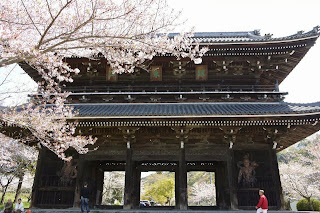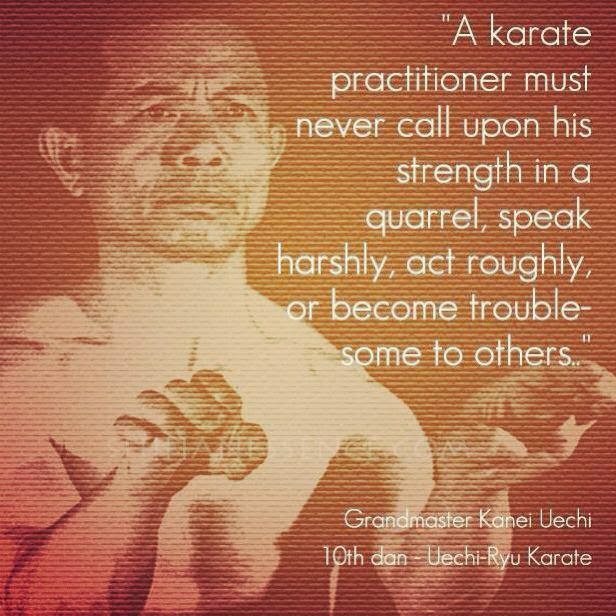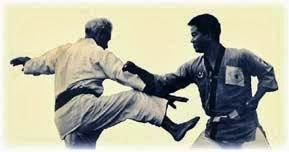Go Shin Jitsu Kenpo [ SHORINJIRYU KARATE ] A Punching Art, is suited for A lifelong practice.
The roots of this fighting system, may be found in the traditions of 'Meng-Hee-Kwan'.
Evasive tactics and simultaneous strikes (in all fighting ranges) are the trademark of
 this style. Shorinjiryu Ryujin Tiijutsu is A living Art , constantly adapting and changing.
this style. Shorinjiryu Ryujin Tiijutsu is A living Art , constantly adapting and changing.
Its purpose is : Combat Strategy and Rapid Response to aggression. As such , it is
not innately geared towards competition.
Shorinjiryu Tiijutsu is A symbiotic balance of External (hard)and Internal (soft) practice.
Go-no-Tii (young practice) and Mai-no-Tii (aged practice) provide An equilibrium in
 teaching and learning , which ensures longevity and dedication in continuous practice.
teaching and learning , which ensures longevity and dedication in continuous practice.



There are Three Primary Katas in Shorinjiryu Ryujin Tiijutsu : Naifanchin* (Daipochin,
Koryu); Sanchin* (Trican, Sam Chien, 3 Battles); Sanpabu* (Motobu Ryu Udon Tii)
Shorinjiryu Tiijutsu is A holistic system ; emphasizing cultivation of Psycho-physical
Energy , Dynamic Tension , and Body-science Mechanics. In addition , auxiliary
longevity Exercises, Resuscitation Techniques and Symmetrical Breathing practices
 are incorporated in the Shorinjiryu regimen.
are incorporated in the Shorinjiryu regimen.
Shorinjiryu Tiijutsu's pragmatism lies in its practice of explosive Muscle-Memory
response and Spontaneous Adaptation to any combat situation.
Spiritual development , adherence to Pugilistic Integrity , and Meditation practice, are
essential traits in the Path of A Shorinji-Do Warrior.
The roots of this fighting system, may be found in the traditions of 'Meng-Hee-Kwan'.
Evasive tactics and simultaneous strikes (in all fighting ranges) are the trademark of
 this style. Shorinjiryu Ryujin Tiijutsu is A living Art , constantly adapting and changing.
this style. Shorinjiryu Ryujin Tiijutsu is A living Art , constantly adapting and changing.Its purpose is : Combat Strategy and Rapid Response to aggression. As such , it is
not innately geared towards competition.
Shorinjiryu Tiijutsu is A symbiotic balance of External (hard)and Internal (soft) practice.
Go-no-Tii (young practice) and Mai-no-Tii (aged practice) provide An equilibrium in
 teaching and learning , which ensures longevity and dedication in continuous practice.
teaching and learning , which ensures longevity and dedication in continuous practice.


There are Three Primary Katas in Shorinjiryu Ryujin Tiijutsu : Naifanchin* (Daipochin,
Koryu); Sanchin* (Trican, Sam Chien, 3 Battles); Sanpabu* (Motobu Ryu Udon Tii)
Shorinjiryu Tiijutsu is A holistic system ; emphasizing cultivation of Psycho-physical
Energy , Dynamic Tension , and Body-science Mechanics. In addition , auxiliary
longevity Exercises, Resuscitation Techniques and Symmetrical Breathing practices
 are incorporated in the Shorinjiryu regimen.
are incorporated in the Shorinjiryu regimen.Shorinjiryu Tiijutsu's pragmatism lies in its practice of explosive Muscle-Memory
response and Spontaneous Adaptation to any combat situation.
Spiritual development , adherence to Pugilistic Integrity , and Meditation practice, are
essential traits in the Path of A Shorinji-Do Warrior.










































































